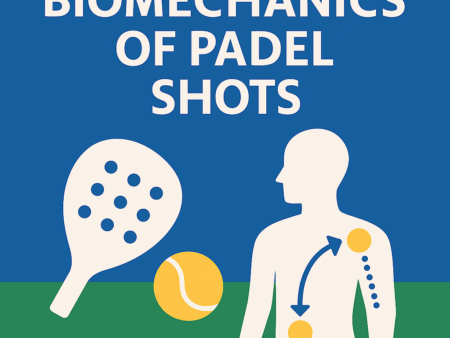
Padel is built on a dual-role tactical system: the left-side attacker and the right-side strategist/defender. At elite levels, these roles become extremely specialised, and understanding them is essential for coaches, players, and analysts.
This guide breaks down the advanced tactical systems used by top professionals and how left–right synergy creates match-winning patterns.
🟦 Why Left & Right Roles Matter
Each side of the court creates different:
✔ angles
✔ shot patterns
✔ responsibilities
✔ pressure situations
Elite duos win because their roles complement, not duplicate each other.
🟩 1. Left-Side Specialist — The Attacker
The left-side player controls:
✔ smashes
✔ overhead pressure
✔ finishing points
✔ offensive volleys
✔ cross-court speed
Their job is to win points.
Key Attributes:
- explosive power
- dominant aerial game
- aggressive positioning
- fast transitions to the net
- elite vibora/topspin smash
Tactical Responsibilities:
✔ Finish lobs
✔ Close middle space
✔ Apply constant pressure
✔ Protect right-side partner
The left-side player drives the team’s attacking identity.
🟨 2. Right-Side Specialist — The Playmaker/Defender
The right-side player controls:
✔ lobs
✔ defensive walls
✔ transitions
✔ structure of rallies
✔ tempo
Their job is to build points.
Key Attributes:
- consistency
- defensive reading
- lob mastery
- wall control
- communication leadership
Tactical Responsibilities:
✔ Manage depth
✔ Reset rhythm with lobs
✔ Direct opponent movement
✔ Protect the diagonal
The right-side player dictates how points develop.
🟥 3. Optimal Positioning System (Elite Level)
Elite teams use a dynamic positioning model:
Left-side:
- stays slightly higher at net
- controls middle + overheads
- attacks opponent’s weaker player
Right-side:
- stays slightly deeper
- prepares counter-lobs
- controls court spacing
This creates a pressure staircase: left attacks, right stabilises.
🟦 4. The 4 Elite Tactical Systems
Below are the four advanced systems used by top pairs.
⭐ System 1: The “High Pressure Axis”
Used by aggressive duos.
Structure:
- Left player permanently high at net
- Right player supports with lobs + resets
- Continuous overhead pressure
Best For:
✔ fast courts
✔ strong smashers
⭐ System 2: The “Lob & Counter-Lob Engine”
Used by defensive specialists.
Structure:
- Right player fires deep lobs constantly
- Left player stays side-on for bandejas
- Opponents are forced backwards repeatedly
Best For:
✔ slow/humid courts
✔ teams with strong lobs
⭐ System 3: The “Rotational Attack System”
Used by modern technical duos.
Structure:
- Both players rotate positions during attacking phases
- Left takes overheads
- Right cuts inside for surprise finishes
Best For:
✔ players with hybrid skillsets
✔ confusing opponents’ defensive spacing
⭐ System 4: The “Pressure Trap”
Used against smash-heavy teams.
Structure:
- Right player sends high lobs to backhand
- Left player covers middle for pressure returns
- Opponents forced into smashes they cannot finish
Best For:
✔ windy conditions
✔ slow courts
✔ opponents with poor overhead stamina
🟧 5. Elite Pattern Combinations
Top teams rely on repeatable patterns:
Pattern A: Lob → Bandeja → Net Crash
- Rightside lob forces overhead
- Leftside bandeja controls pace
- Both attack the net
Pattern B: Vibora → Middle Attack
- Leftside vibora produces weak return
- Partner intercepts middle volley
Pattern C: Slow Reset → Deep Cross Lob
- Rightside resets rally
- Launches a deep cross lob to reposition opponents
These patterns win 70%+ of structured points.
🟫 6. Left–Right Communication Protocols (Elite Teams Use This)
Elite pairs use specific communication rules:
✔ “Mine” early on overheads
✔ “Switch” for forced rotations
✔ “Reset” to slow the rally
✔ “Wall” to prep for defensive play
Communication is a tactical weapon.
🟥 7. Matchup-Specific Adjustments
Different opponents require different left–right systems.
vs Smashers:
✔ more lobs
✔ slow rhythm
✔ deeper positioning
vs Defenders:
✔ higher pace
✔ vibora volume
✔ early net pressure
vs Right-side weak players:
✔ isolate cross-court
✔ use viboras into feet
🟦 8. How Court Speed Changes Roles
Fast Courts:
- Left dominates more
- Overheads win quickly
- Right plays more support
Slow Courts:
- Right becomes key playmaker
- Lobs decide rally flow
- Left must be patient with bandejas
Court speed decides tactical identity.
🟩 9. How to Identify Tactical Systems During Matches
Look for:
✔ player height at net
✔ lob frequency
✔ overhead target zones
✔ recovery speed after smashes
✔ middle coverage
You can identify a team’s tactical style within 10–15 points.
🟨 10. Building a Perfect Left–Right Partnership
A world-class duo needs:
✔ complementary roles
✔ shared tactical language
✔ consistent patterns
✔ emotional synergy
✔ ability to switch systems mid-match
This is what separates good pairs from champions.
🟩 Summary
Elite padel teams operate within sophisticated, role-based tactical systems.
Understanding left–right synergy reveals:
- how teams build attacks
- how they defend under pressure
- which matchups favour which duo
- how court speed alters tactical identity
Mastering these systems unlocks expert-level analysis.
Next: Page 5 — Predictive Modelling Using Rally & Shot-Pattern Data.


